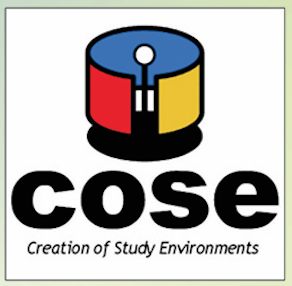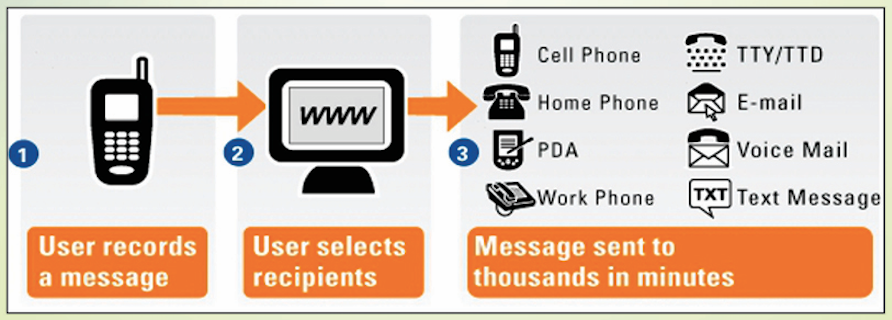

Go to Admin » Appearance » Widgets » and move Gabfire Widget: Social into that MastheadOverlay zone

Technology – A latest mode for teaching delivery
(Part 2)
Introduction
Continued from part 1, in this session I will discuss different Virtual Learning Environments available in the market, what makes them different from each other and what researchers have to say about them.
Comparison of VLEs
Now, as it is clear that a VLE is part of the LMS sub domain of CMS, with its aim to enhance the effective teaching delivery and students learning ability, as well as reducing administrative work. As mentioned earlier there are a huge number of VLEs available in the market and in this section I will be comparing the functionality provided by three systems of which two are widely used and one is used at a particular university.
According to a study carried out at Athabasca University in Canada, (Stewart et al., 2007) Moodle achieved the first position by gaining positive rating by 42% majority and similarly LotusNotes second with 32% and Webct (now Blackboard) was third with 29% ratings. The results of this study were based on users’ experience and faculty choices and did not consider the technical strength of any system.
I will be comparing Moodle, Blackboard and Creation of Study Environments (COSE). I have personally experienced Moodle, Blackboard and Webct (which is now merged with Blackboard) at my college and university which will be helpful in comparison and my third choice is simply “random” but indicative of similar systems.
Blackboard
Blackboard is a web based virtual learning environment which is partly owned by Microsoft. It costs $10,000 per annum (approximate average) to use. It enhances the student learning experience and enables teachers to assess their students using various assessment methods.
It has a relatively “easy to use” interface and its tools make it easy to develop courses and syllabuses, manage students and their assessments, enhance communication amongst students with the aid of blogs, journals, etc. It provides interactive modes of communication which engages users. It also provides survey tools and administration with options to generate statistical data based on the students’ progress.
According to a study carried out in 2005, Blackboard has following advantages over Moodle: (Munoz & Duzer, 2005)
• The appearance of the content is more polished and aesthetically more appealing.
• It has better system for student grading and keeping track of them.
• Discussion is threaded which makes it easier to distinguish between new posts and replies also it’s easier to differentiate between read and unread posts.
• Prominent display of announcement when a student enters the course makes sure that no students miss out of the new updates.
• For new to VLE teachers, the blackboard features are more intuitive and easy to use and learn.
• It provides a built-in survey tool.
• External resources can be grouped to one place, readily available when required.
The latest release of Blackboard 9.1 has added some new features to foster student engagement and learning experience. Some of these features are: (Black Board, 2010)
• Wikis are used as a method of promoting active collaboration on course content and group projects. Only web browser is needed for this to happen and teacher can monitor and if required participate in the evolution of the work. These also enable teachers to measure the contribution made by each student which will help them in grading them.
• Mashups allow faculties to integrate visually engaging learning content from YouTube, SlideShare and Flickr. It is easy for the faculty to search and add content to the system just by few clicks. A wrap player is provided for YouTube to make it accessible to everyone.
• Blackboard Connect™ is a way of keeping student better connected and provides them with alerts and notifications to manage their academic priorities and deadlines.
• Accessibility is enhanced by enabling a blind person to interact with the application more effectively and release 9.1 is Gold certified by National Federation of the Blind for Non-Visual Accessibility.
• Blackboard Learn Toolbar aid is powerful as relevant searches and can be used with Internet Explorer and Firefox enhancing the browsing experience for learners. Microsoft Bing Decision Engine is used for this task which uses context aware decision support information. Notifications are also linked with the toolbar which means that student is instantly connected to the institution as soon as they open their web browsers, they do not have to go to blackboard explicitly to view the latest updates.
• Instant Messaging that is pre-populated with classmates so that students don’t have to explicitly search and adds the people to their contacts, using this integrated messaging service enriches the collaboration amongst teachers and students.
Release 9.1 also enhances the efficiency of teachers by:
• Allowing content management at course level.
• Improved grading and grade management allows the teachers to grade in the way easier to them.
• Saving grade preferences will enhances their efficiency in managing grading.
• Customising grading view provide a way to personalise their workflow.
• Assessment manager allows them to create assessments in less time by providing options for multi-question selection along with many other options.
• Easier management of learning content by enabling teachers to easily upload and manage content across courses.
• Improved student identity verification.
Moodle
Moodle is an open source and freely available VLE. It is a learning environment developed by teachers for teachers and is flexible in customisation by the programming staff. It has no licensing fee and the source code is made available to the licensee which can be customised by them according to their needs without any restriction from the Moodle community. These two properties are the primary reasons for its increased market share. It is used by 48,025 registered institutions and organisations in 210 countries around the world and has a user base of over 34 million. (Moddle Org, 2010)
It is used to provide e-learning at schools and enterprises and supports different learning and teaching styles. It enables the delivery of learning activities and the publishing of resources online and enhances communication and collaboration amongst users.
According to Moodle site (Moddle Org, 2010) more than 60% of the users are using version 1.9.x so therefore discussion relates to this version. It is developed by a core team of developers at Moodle Headquarters in Australia and is supported and enhanced by hundreds of community volunteers. Moodle partners provide professional services all over the world which provide customise solutions for organisations.
As in Blackboard without the need of programming knowledge, it can be used to teach virtual courses with no face-to-face interaction as well as being used to provide blended learning by using it alongside traditional classroom teaching. The basic features include:
• Creation, management and delivery of content for courses online. It allows the user to incorporate any type of content i.e. attach files for students to download, link to external online resources, embed or attach or link to video and audio files, display graphics, pictures and videos alongside text
• Enhanced and efficient communication and collaboration using various tools create rich, vibrant and interesting classroom environments.
• Automated assessment and submission of assignments, it can also be used to provide integrated quizzes and maintain grade books.
• Unlimited number of users as no licensing restrictions are applied as oppose to Blackboard where only fixed number of users are allowed to be registered to the system.
• Chat with your course mates.
• Discussion forums focussed on any number of topics/subjects.
As compared to Blackboard, Moodle has the following advantages over Blackboard according to the study carried out in 2005: (Munoz & Duzer, 2005)
• It is easy to provide individualised feedbacks to all the assignments.
• Monitoring students’ activity in class is easier then Blackboard as location is monitored along with when and how often student access parts of class. It also provides the mechanism to find out the preferred parts of the course by using student tracking.
• Easier to manoeuvre by using shorter process to add content.
• It uses less area for navigational options which increase the area for contents.
• Multimedia content can be incorporated easily.
• More help and tools available in the form of blogs, journals, community helpers.
• More reliable quiz tool which scores correctly and provides details on the student’s use.
• Features can be added by customisation and the features are more robust then on Blackboard.
• Survey tool allows as few as two choices.
Creation of Study Environments (COSE)
COSE is a VLE developed by Staffordshire University and available as a freeware binary download which means that source code will not be provided (possibly may be available later) and it cannot be modified according to the individual organisation’s needs. However there is no cost for using it but an optional service contract is available by the developers which includes technical support via telephone or e-mail. (Staffordshire University Enterprises Ltd., 2005)
The aim of the development of COSE was to provide a VLE which creates a study environment and not only the mechanism for teaching delivery material, which is effective at lower ownership costs and promotes good practice. This development was funded by JISC Technology Applications Programme (JTAP) from September 1996 to August 1999 and is still getting support from JISC in its work on interoperability.
According to COSE website, the development of COSE was based on learner-centred approach to achieve the aim of study environment creation. COSE is not widely used by many different organisations; it is an example on a VLE which is only used at the developer organisation.
COSE let’s learning be active and focussed by providing learners with opportunities to do something within COSE and outside COSE. It enables the mixing of traditional and e-learning providing the focus for a blended approach to learning. It enables the teacher to provide the learning opportunities for learners and the resources needed to enable them to carry them out.
It enables the appropriate level of communication and collaboration by allowing users to share files and group level chat rooms. COSE allows content to be reused which avoids duplication of same content. The “approval” mechanism provides quality assurance. Every submission of assignment to be marked by a teacher is confirmed by an e-mail to both teacher and the student. Results of the automatically marked assessments (multiple choice questions) are returned to the teacher.
COSE keep track of learner’s activity and provides sufficient information to the teacher to assess their work and monitor group participation in group tasks. This feature also enables the system to allow users to resume their work from the point where they last logged out. Like other VLEs users are not required to have any particular technical knowledge in order to use the system.
(Continued)

You must be logged in to post a comment Login